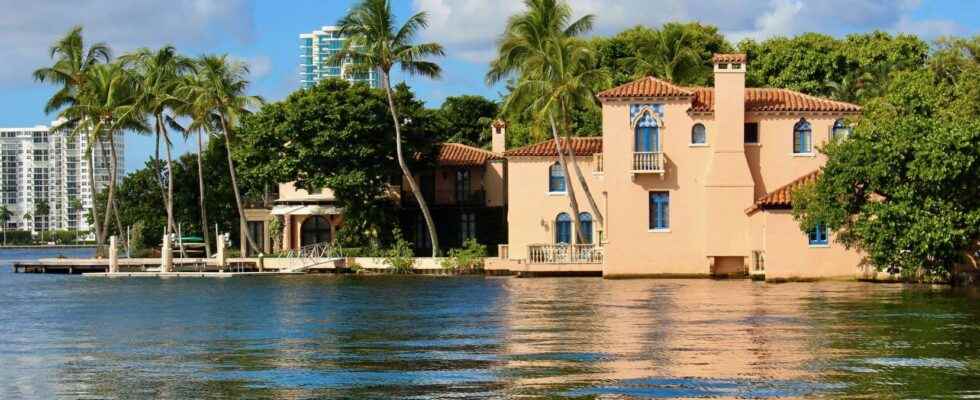This text is part of the special book Plaisirs
If the cold and the snow are seriously starting to hurt your natural good mood, it’s probably time for you to go play the snowbirds under the Florida sun. This notebook number pleasures takes you there, offering you some off-the-beaten-path destinations. First stop: the charming town of Palm Beach, which can thank the “Fab Four”, a famous quartet of architects from the inter-war period, for the unique cachet they gave it.
It is a territory of nothing at all, barely 20 km2, wedged between the Atlantic Ocean and Lake Worth, that stretch of the Intracoastal Waterway that separates it from the plebs. Sorry, from West Palm Beach.
It’s a pocket island where, at last count, 54 billionaires reside either permanently or seasonally. It is above all a Florida destination like no other, which one does not visit so much to snub Donald Trump, Bon Jovi or Sylvester Stallone as to walk in the footsteps of the “Fab Four”.
No, not the Beatles — rather the four interwar architects who created the harmonious built landscape of Palm Beach by interpreting the style Mediterranean Revival, then in vogue. Result ? A profusion of Spanish tiled roofs, stucco walls, turrets straight out of the Italian Renaissance, pink plasterwork and other Gothic-Venetian details. “Not forgetting the use of naughtya typically Floridian material made of coral rock,” says guide Leslie Driver, with whom we are doing an architectural tour.
Mar-a-Lago, a 126-room palace built for the General Foods heiress in the 1920s, valued at US$8 million in 1927 and paid $5 million by an ascendant Trump trickster in 1995, was designed by a member of this quartet: Marion Sims Wyeth. A wing of the very chic Brazilian Court hotel was designed by his colleague, Maurice Fatio, who also designed the Vanderbilt mansion. John Volk’s homes stand on most streets in Palm Beach, according to the Preservation Foundation.
A worldly “starchitect”
However, the most beautiful residences on the island, such as Casa de Leoni, on Worth Avenue, Casa Nana, on Billionnaire’s Row and, not far away, El Solano, the former residence of another “Fab”, John Lennon, all bear the mark of Addison Mizner. “Starchitect” of his time, he will have shaped Palm Beach over the 70 private and public buildings with which he will have endowed it.
“Mizner was a worldly architect and an eccentric with an imposing physique, who walked around with a monkey called Mr. Johnny Brown on his shoulder”, relates Mr.me Driver. The wallpaper that adorns the oriental lobby of an emblematic Palm Beach hotel, The Colony, built in 1947, during the post-war real estate boom, immortalizes this Mr. Brown.
For Elisabeth Munder, spokesperson for the famous establishment, Palm Beach differs from other seaside towns in that it was created as such and has never ceased to be. “That means it’s not just a vacation spot where you just drop by: families have lived here for generations. We study there, we work there, it changes everything,” she says. Families like the Flaglers, the Wanamakers, the Kennedys, the Lauders. For the record, Henry Morrison Flagler, formerly at the helm of Standard Oil and the Florida East Coast Railroad, played a major role in the creation of the destination, among other things by building his first hotels there.
Today theold money and a few celebrities live discreetly in the shade of the monumental cedar hedges that run for miles and miles along the boulevards of Palm Beach, and there are hardly any but curious strangers to stretch their necks as they pass, hoping to catch a glimpse, behind these green screens, of other superb creations by the “Fab Four”!
This way, the retro trip!
Our journalist was a guest on Discover The Palm Beaches.
This special content was produced by the Special Publications team of the Duty, relating to marketing. The drafting of Duty did not take part.
